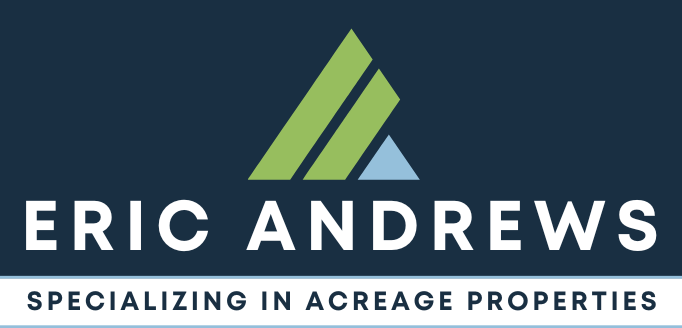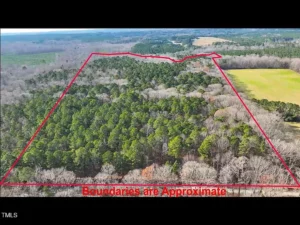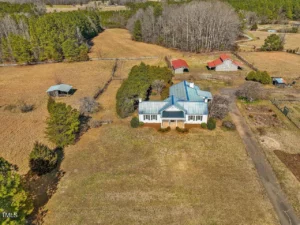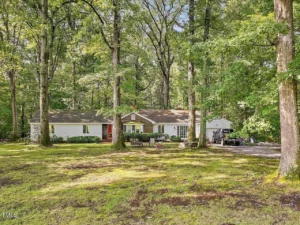This is important information for anyone who thinks they may have landlocked property. 1. Public Road Frontage. This is usually the best type of access to have, as long as the access is DOT approved. 2. Flag Lot. This is very common in our area after larger tracts get broken up. 3. Easement. These are very popular in rural areas of the state. There are several types of easements. There are unlimited easements (60′ wide), 30′, 15′, 10′ easements, Cart Path easements and Prescriptive easements (not deeded).
Interviewer: What are the different ways, the different access types for properties?
Eric: So this is real important. So this is one of our most popular YouTube videos. We get the most calls on it. You know, everyone’s worried about what type of access they have. So the crème de la crème, the best access that we can have is public road frontage. And so what public road frontage means is you got that perfect square of property and one of your borders is a public road. Well, normally that means that you have public access. We’re dealing with a client right now. They have road frontage on Highway 64, but it is on the bypass. And North Carolina, DoT says, “That’s great. You got public road frontage, but you do not have access.” So they have public road frontage, but obviously they’re trying to make that bypass as fast as possible. So the only way they’re letting you get on or off the bypass is via an on ramp or an off ramp.
So this property has public road frontage, but it doesn’t have permission to go on the road. Normally, especially we’re on these back state roads, you have public road frontage, you have DoT access. Then the second type of access is called a fee simple flag lot. And that means that we have a flag lot with a tiny bit of frontage, and it’s shaped just like a flag. And so the amount of frontage can be like a hundred feet or so. And then you could have multiple flag, lots right in a row, but then NC DoT doesn’t like the driveways to be too close to each other. So we have the one flag lot, and then we have the public road frontage. And then the other type of access that we have is called an easement. The best kind of easement that we can have is an unlimited easement that’s 60 feet wide.
And the reason why that one’s so good is because it could support a subdivision, if you have a regular 60 foot easement. Sometimes, we have 30 foot easement. Sometimes we have 10 foot easements. Sometimes we have 15 foot easements. They all have different rules. One of the rules in Chatham County is you’re allowed to service four lots by a private easement, four lots that are less than 10 acres. So, that’s the maximum that you can do with an easement in Chatham County.
And then something that we’ve written about before is the cart path or the cartway easement. That means that you have a deeded easement, but it’s not a prescribed width. It doesn’t say how many feet it is, but it does say this is your access. Banks don’t like that one. And then the worst one that we have is the prescriptive easement. There is a road that goes to your property. You’ve been using it for a long, long time. There’s no one that could stop you from using it, but it’s not a deeded access. We don’t have a deed easement. So that it could be interpreted as landlocked. You’re not really landlock because you get to go in and out, but it’s not as good as for loan purposes. So those are the different types of accesses that we have in the area.
Interviewer: You said in Chatham county-
Eric: Four lots less than 10.
Interviewer: Yes. And, that’s because the road is 15 feet, 30 feet wide?
Eric: No. That’s just a regular easement. That’s usually in the 30 to 60 foot range.
Interviewer: How does that change in like Randolph for Wake or Durham County?
Eric: So I’m not as familiar with those rules. Usually, we’re all the same, and the only reason why we say four lots less than 10 acres, because 10.01 acre lot is exempt from subdivision rules. So if you had 1100 acres, you could have a hundred properties assessed by the one easement, if they were all 10.01 acres.
